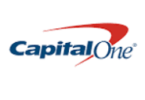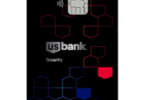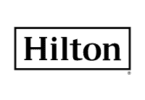Chase offers two no annual fee rewards cards, Chase Freedom & Chase Freedom Unlimited. Often when you no longer want one of their Chase branded rewards cards with an annual fee (e.g Chase Sapphire Preferred or Chase Sapphire Reserve) your best option is to downgrade it to one of these Freedom cards.
What’s The Difference Between The Two?
The cards are basically identical (e.g they share the same guide to benefits & fees). The only real difference is in the rewards structure:
- Chase Freedom Unlimited earns 1.5 Chase Ultimate Rewards points per $1 spent on all purchases
- Chase Freedom earns 5 Chase Ultimate Rewards points per $1 spent on rotating categories that change quarterly (cap of $1,500 in spend per quarter) and 1 Ultimate Rewards points on all other purchases
The sign up bonus on both cards is typically the same as well (e.g standard offer is 15,000 points after $500 in spend but you do see targeted offers of up to 30,000 points).
What Card Is Better?
To determine what card is better you need first decide how much you value Chase Ultimate Rewards points. Points are worth 1¢ each towards statement credit, but they can be transferred to Chase’s travel partners if you have one of the following Chase branded card with an annual fee:
- Chase Sapphire Preferred
- Chase Sapphire Reserve
- Chase Ink Preferred (Business)
- Chase Ink Plus (Business, discontinued)
- Chase Ink Bold (Business, discontinued)
If you don’t have one of those cards then the Freedom Unlimited will be of little use as it’s basically just a 1.5% cash back card (poor compared to other options) and the 5% on rotating categories that the regular Freedom offers would be much more useful. If you do have one of those cards then you can transfer to the following travel partners:
| Chase Travel Partners (All Transfer 1:1) | ||
|---|---|---|
| Airlines | ||
| British Airways Executive Club | Singapore Airlines KrisFlyer | Virgin Atlantic Flying Club |
| Flying Blue AIR FRANCE KLM | Southwest Airlines Rapid Rewards | Aer Lingus |
| United MileagePlus | Iberia Plus | Emirates |
| Air Canada Aeroplan | ||
| Hotels | ||
| Hyatt Gold Passport | Marriott Rewards | |
| IHG Rewards Club |
You also need to look at what credit cards that earn at a high rate on all spend you have available to you. We need this so we can use it as a bench mark to compare the Chase Freedom Unlimited to.
- If you have a 2% card, then you need to value Ultimate Rewards points at over 1.34¢ per point otherwise you’d never use the Unlimited.
- If you have a 2.5% card then you need to value Ultimate Rewards points at over 1.67¢ per point otherwise you’d never use the Unlimited
- If you have a 3% card then you need to value Ultimate Rewards points at over 2¢ per point otherwise you’d never use the Unlimited
If you don’t value them above those rates then the Chase Freedom will be better (even if you just spend $1 on a 5% category) as you’d never want to use the Unlimited card.
Once you’ve done that you need to work out how much spend you would put in the Chase Freedom categories. Here is a list of what they currently offer and have offered in the past:
| Q1 | Q2 | Q3 | Q4 | |
|---|---|---|---|---|
| 2017 | Gas Stations, Local Commuter Transportation | Grocery Stores & Drugstores | Restaurants & Movie Theaters | Walmart & Department Stores |
| 2016 | Gas and local commuter transportation | Grocery Stores & Wholesale Clubs | Restaurants & Wholesale Clubs | Drugstores, Department Stores & Wholesale Clubs |
| 2015 | Grocery Stores, Movie Theatres And Starbucks stores | Restaurants, Overstock.com, H&M, Bed Bath & Beyond | Gas stations, Kohl's | Amazon.com, Audible.com, Zappos.com, Diapers.com |
| 2014 | Gas stations, Movie Theaters, Starbucks Stores | Restaurants, Lowe’s home improvement stores | Gas stations, Kohl’s | Amazon, Zappos & select department stores |
| 2013 | Restaurants & Movies | Home improvement stores | Gas stations | Online shopping |
| 2012 | Gas stations,Amazon.com | Grocery Stores, Movie Theaters | Gas Stations, Restaurants | Hotels, Airlines, Best Buy, Kohls |
| 2011 | Grocery Stores, Drug Stores | Home Improvement, Lawn & Garden, Home Furnishings | Gas, Hotels, Airlines | Dining, Department Stores, Movies, Charity |
For example let’s say you max out the 5% categories each year (unlikely for most people) you’d spend a total of $6,000 and earn 30,000 Chase UR points. To earn the same amount of points on the Chase Freedom Unlimited card you’d need to spend $20,000. I think that helps illustrate the value proposition the regular Chase Freedom provides over the Unlimited card. Another illustration is that on every day spend the Unlimited earns 0.5 point more whereas on the 5% categories the regular Freedom earns 4 points more.
Final Thoughts
For the majority of readers the regular Chase Freedom is the better card. I can think of a few exceptions:
- You spend a lot of money on things that’s difficult/impossible to get a category bonus on (and I’m not just talking about the categories the Freedom offers).
- You already have a regular Chase Freedom/won’t be able to spend much on the 5% rotating categories.
Even then you still need to value Chase UR points at a significantly high rate and have a premium Chase card to allow for point transfers. I think in general the Unlimited card is overrated, especially with more cards offering 2%+ cash back on all purchases. For some people the card is obviously fantastic and can provide a lot of super sized value but as mentioned for the majority of people the regular Freedom makes more sense.








I have not done a chase application in many years (like at least 4 years).
I had a regular no fee Chase Preferred and a regular Chase Freedom.
I recently applied for and got approved for the Chase Business Ink Unlimited card.
Also thinking of doing a personal card application as well with not that high of an initial spend requirement.
I have 3 questions please
– Can I apply for any other variety of Chase Freedom if I already have regular Chase Freedom? Or will it be better to close that regular Freedom first. I have not used it for years and they sent me a letter 2 years back saying they will close it but they never did it for whatever reason.
– How long should I wait between personal and business card application?
– I also want to apply for a Citi card. I guess it is better to do the Chase cards first and then Citi?
thank you
I got the Chase Freedom Unlimited last year during the 2 weeks they offered a 3x bonus on everything for a year. Everything but 5x spend & siign-up bonus spend has gone on this catd – great year for URs!
I strongly encourage folks to keep a space open for amazing limited Chase offers like this one (Plat status for almost 2 yrs on the Ritz Carlton card just before shut down is another offer that comes to mind). At $0 AF, no other card competes this year with the CFU when paired with a premium Chase card – 4.5x min on ALL spend.
I decided to downgrade my unlimited for the Sapphire (original) and then hopefully I could apply for the Unlimited.
Dec 1 my AF hit on my CSP card (opened one year ago), so I’m going to call to cancel/downgrade (assuming it’s still true that Chase is unlikely to offer interesting retention bonuses in my situation).
I already have one Freedom card, and I rarely max out the quarterly 5% categories, but I can imagine putting more work into that in the future if I have two Freedoms.
I have other cards that will give me decent bonuses on dining, mainly the new BofA PR card. Given that, am I right that there’s zero reason to choose to downgrade to a Freedom Unlimited – I might as well get a second Freedom just in case I ever manage to go over the max in the 5% category spend?
If I downgrade to the Freedom, will my UR points just automatically stay with the card, or should I transfer them to my existing Freedom, or to my new Ink Preferred? I’m planning on getting a CSR in another year when my CSP bonus rolls off the screen and I probably won’t spend or redeem any UR points until then.
Thanks for any advice…
> You spend a lot of money on things that’s difficult/impossible to get a category bonus on (and I’m not just talking about the categories the Freedom offers).
I am able to put most of my utilities (Phone, Internet, Gas, Electric, Water, Sewer) on a credit card, so I’ve found the Citi DoubleCash (and more recently, the CFU) to be very useful for that since it is a large amount of non-bonus spend.
Is there any truth to the comment that said that change won’t allow a PC from CSR or CSP to a Freedom card if you already have one? Also, what’s the harm in getting both the FU and the F. As stated above the real value of UR for a small time point enthusiast, is taking advantage of the complete suite of cards. Even if I were to max out a number of Freedom cards on all quarterly bonuses (ie.gift cards), there’s still plenty of spending on the table. At a minimum value of 2.25 cents, I”ll take it.
My experience: in September I tried three times to convert my CS to CF#2 but no go. PCed to CFU, waited two weeks, PC to CF#2 was no issue.
Did you already have a CFU and was forced to PC to another one, or did you only have a CF and had to PC to the available CFU instead of the CF?
I’ve got both i use freedom unlimited for auto payment every month. and use 2 of my freedom card for 5% cash back which i think it helps alot
I’m a heavy churner and the FU is my card for everyday spend, when I’m not working towards a MS.
Category spend goes on my Freedom, travel and dining on my CSR, and everything else on my FU. All points get combined to my CSR for redemption.
I just assumed everyone did it this way! (If they had all 3 cards). I recommend the FU to family/friend non-churners who want something simple.
Great post!
The $6,000 vs $20,000 comparison is what I always say when asked which card is better.
Most people just don’t spend enough, after those spent toward sign-up bonus requirements, to be anywhere close to $20k. FU is barely worth it.
I just don’t see a scenario where FU is better than 1) general spend to meet a bonus requirement, 2) BB+ 2MR/$, or 3) 2% cashback.
agree with your 1 and 2 but will have to disagree with your 3. FU points have the potential to be valued as much as 8-10c but a 2%, aka 2c, will never be worth more.
There is an argument to be made that 2% cash back for something needed is better than using points on a future discretionary purchase, especially when a point hoarding mentality exists, not that it does with any of us 😉
Remember, the difference between 2% and 2.5% return only amounts to $5 for every 1000 charged, At $2,000/month in charges, that’s only $120/year.
I think we might set a comment record if William decides to tackle this one.